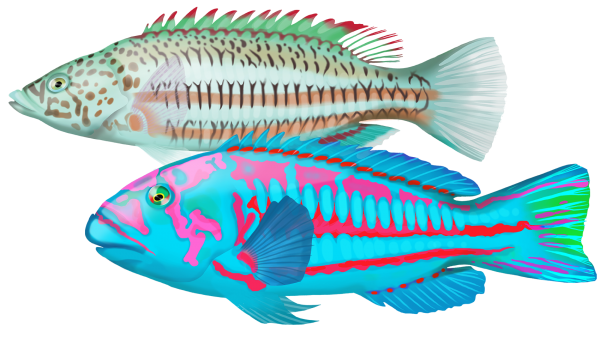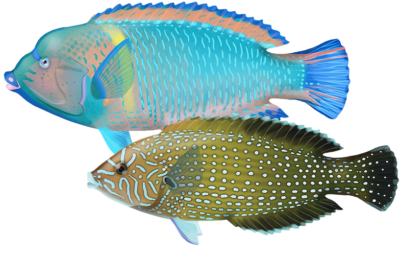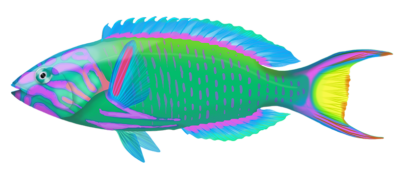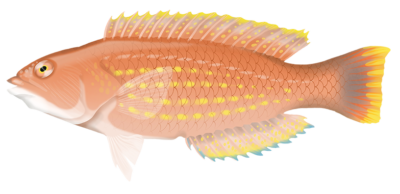Quick Facts
Distribution
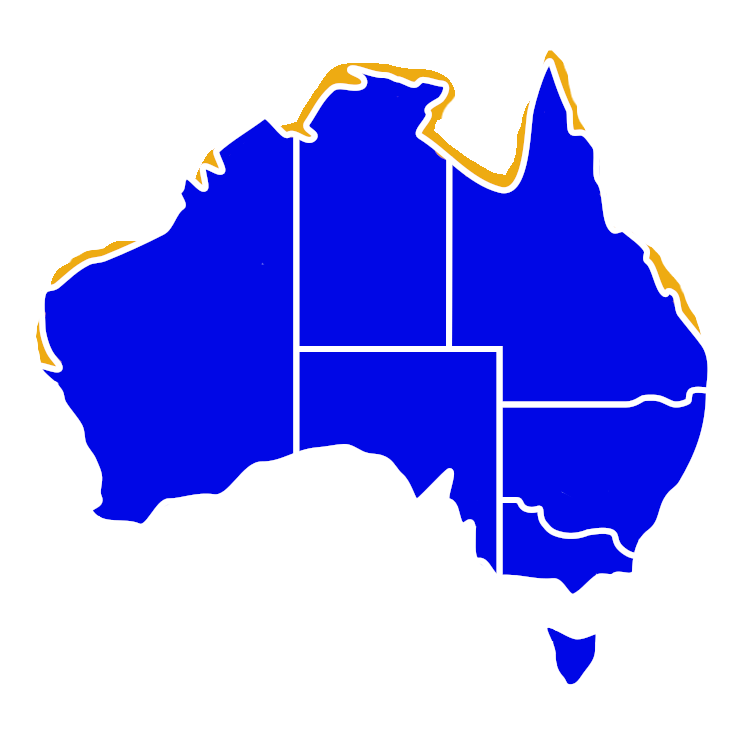
Interesting Info
- The surge wrasse is a species of fish commonly found in the coastal waters of Australia, particularly in the Great Barrier Reef and the Coral Sea.
- Surge wrasses are characterised by their bright purple colour, which is most vivid in adult males. Juvenile surge wrasses have a greenish-yellow body with black spots, which gradually disappear as they mature.
- They are carnivorous and feed on small invertebrates such as crustaceans, molluscs, small fish and worms.
- Surge wrasses are highly territorial and aggressive towards other fish that encroach on their territory.
- Adult males are known to engage in elaborate courtship displays to attract females.
- Breeding occurs during the summer months where the males create nest sites to attract females, they inspect the sites and if happy lay eggs. The male fertilises the eggs, guards the nest site, and protects the developing eggs from predators and intruding males.
- The estimated lifespan is up to 10 years in the wild.
Species Interaction
Aquarium, Snorkeling & Diving
The Surge Wrasse can be a good aquarium fish for experienced hobbyists who have a large tank, provide a well-established and stable aquarium environment, and are willing to provide the necessary care. They are an aggressive fish towards other species. They can be an interesting and colourful sight for snorkelers and divers who encounter them in their natural habitat.
Scientific Classification
Kingdom: Animalia
Phylum: Chordata
Class: Actinopterygii
Order: Perciformes
Family: Labridae
Genus: Thalassoma
Species: Thalassoma Purpureum
Conservation Status
There is limited information available on the conservation status of the Surge Wrasse in Australia, but the species is not considered to be of conservation concern in its native range.
How to catch
Surge Wrasse
Catch Difficulty: Easy
Tackle: Running Sinker Rig
Bait: Fresh cut flesh baits, Lures, Pilchards, Prawns, Squid, Worms
Technique: Keep bait on the bottom, Keep bait close to the reef/structure
Popularity: Targeted
Surge Wrasse
As Aquarium Fish
Care Level: Moderate to difficult
Temperament: Aggressive
Diet: Carnivore
Reef Compatible: Yes
Minimum Tank Size: 100 gallons
Recreational Viewing
- Snorkeling & Scuba
Finding: Intermediate
Temperament: Aggressive
Location: Inner Reef, Outer Reef, Lagoon
Danger: None


